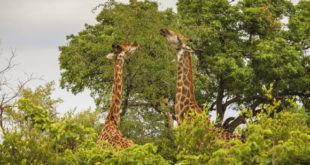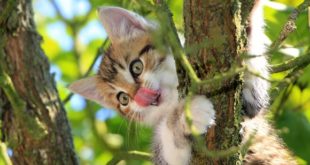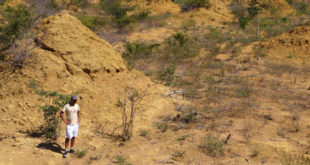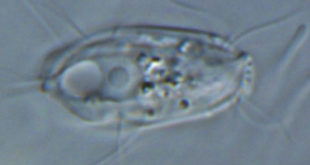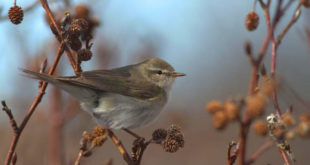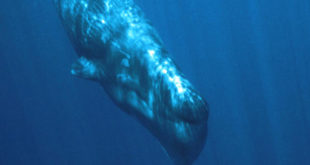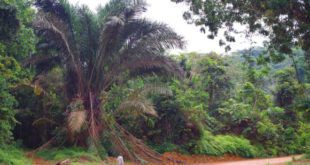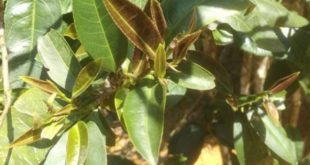While already known that giraffes display preferred choices of companion within their social group, until now it has not been clear what drives these and whether these choices are just some, or all of the time. University of Bristol researcher Zoe Muller and her colleagues from Switzerland, Kenya, Brazil and …
Read More »Spiny Tongues Help Cats Keep Cool, Says New Study
The cat tongue is covered in sharp, rear-facing spines called papillae, the precise function of which is a mystery. In a combined experimental and theoretical study, researchers at the Georgia Institute of Technology explored how cats groom fur using these fine structures. Dr. Noel and Dr. Hu discover structures on …
Read More »Scientists Find 3,820-Year-Old Termite Mounds in Brazil
An international team of entomologists has found that numerous termite mounds in Brazil are between 690 to 3,820 years old. The termite mounds are found in dense, low, dry forest and can be seen when the land is cleared for pasture. Image credit: Roy Funch. The vast array of termite …
Read More »Elephantnose Fish Use Electric Colors to Reliably Identify Prey, Study Says
An African freshwater fish species called the Peters’ elephantnose fish (Gnathonemus petersii) generates weak electrical pulses to safely navigate its environment. Animals, plants, or the fish’s favorite food — mosquito larvae — provide specific electric colors during this electrolocation, according to a new study published in the journal Current Biology. …
Read More »Newly-Discovered Protists Add New Branch to Tree of Eukaryotic Life
A team of researchers from Dalhousie University, Canada, has identified two previously undescribed species of hemimastigotes — members of the extremely rare protist group Hemimastigophora. Through phylogenetic analysis, they found that hemimastigotes represent a previously unrecognized supergroup of eukaryotes. The findings are published in the journal Nature. Hemimastix kukwesjijk. Image …
Read More »Study: Siberian Willow Warblers Migrate Incredible 8,000 Miles One Way
A small songbird called the Siberian willow warbler (Phylloscopus trochilus yakutensis) holds a long-distance migration record in the 10-gram weight category — with the tiny birds flying around 8,000 miles (13,000 km) or longer to reach their destination. The Siberian willow warbler (Phylloscopus trochilus yakutensis). Image credit: Kristaps Sokolovskis. The …
Read More »Study: Toothed Whales Use Sonic Equivalent of Flashlight to Echolocate Prey
Toothed whales — apex predators varying in size from 40-kg porpoises to 50-ton sperm whales — use narrow beams of high intensity sound to echolocate prey, according to a new study. A graphical rendition of a diving sperm whale using its echolocation. Image credit: Chris Johnson. Toothed whales comprise 75 …
Read More »Two New Palm Species Discovered in Africa
An international team of botanists has discovered and described two new species of the African palm genus Raphia from Cameroon and Gabon. Raphia zamiana: a habitat along the road, with team member Dr. Raoul Niangadouma for scale, in Oyem, Gabon. Image credit: Thomas L.P. Couvreur. Raphia is the most species-rich …
Read More »Hongyacha: Caffeine-Free Tea Plant Discovered in China
Hongyacha, a new type of wild tea plant from the mountains of southern China, contains little or no caffeine, according to a study published in the Journal of Agricultural and Food Chemistry. Leaves and young shoots of hongyacha. Image credit: Ji-Qiang Jin et al, doi: 10.1021/acs.jafc.8b03433. “Hongyacha is a wild …
Read More »Inventive Orangutans Make Hook Tools to Retrieve Food
Orangutans spontaneously make hook tools out of a straight piece of wire, using them to ‘fish’ for food. Laumer et al show that orangutans can spontaneously innovate a hook tool out of a straight piece of wire to solve a novel problem. Image credit: Laumer et al, doi: 10.1038/s41598-018-34607-0. Orangutans …
Read More » #Bizwhiznetwork.com Innovation ΛI |Technology News
#Bizwhiznetwork.com Innovation ΛI |Technology News
